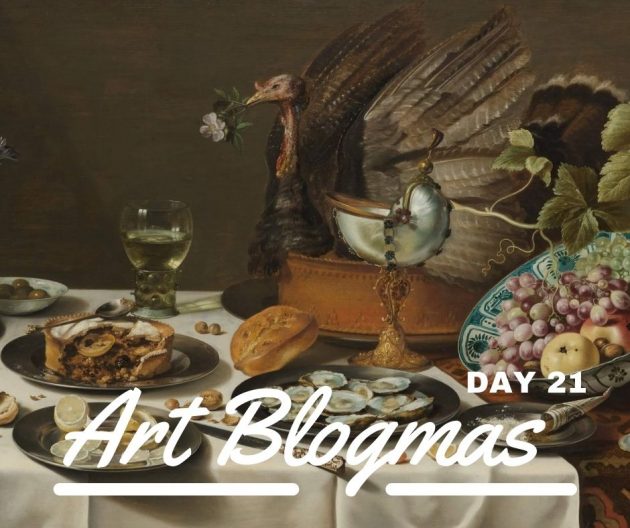On day 21 of Culture Tourist Art Blogmas, we’re going to see one of the most fascinating paintings from the Rijksmuseum in Amsterdam. Today, I’m bringing you Pieter Claesz and his Still Life with a Turkey Pie.
Art Blogmas 2021
Although at first glance, still lifes could seem like decorative art, filled with some pretty images, without any deeper meaning, that couldn’t be further from the truth. They offer plenty of stories, symbolism and hidden messages for those who know how to find them.
⤷ Read more: 10 things you didn’t know about Rijksmuseum
Pieter Claesz: Still Life with a Turkey Pie
⤷ Where is it? Rijksmuseum, Amsterdam
These still lifes are a typical motif from the Dutch Golden Age. The style on them is realism, and they almost look like photos. The realism of these paintings is created by focusing on three different elements: details, light and colours.
Focus on details is visible in fine lines and tiny objects on the paintings. You can see it, for example, on a lemon or pepper on the table. The light was quite an essential feature of these paintings. You can see here a light reflection on the table cloth. And even see the source of light – a reflection of the window on the glass that’s on a table. Dutch artists were painting with natural pigments produced in windmills during the 17th century. By mixing them with linseed oil, the paint was created. Interestingly, they had only around ten different pigments during that time. But, that didn’t stop those 17th-century Dutch painters from creating fantastic masterpieces.
The food on this table is also quite interesting. You can see some very exotic items here. Some of the food here was imported from the south of Europe, like grapes, lemon or olives. There are also links with the new continent, America, already visible, by the large turkey on the right-hand side of the table.
It’s interesting to see some luxurious food in those paintings, too. Like oysters, for example. Something that’s still quite expensive even today.
However, those oysters, turkey or olives are not the most expensive food in this painting. Having a pepper on a table in the Netherlands during the 17th century showed its owner was a very wealthy person. The price of pepper was equal to the cost of gold during that time.
There are many more details and hidden symbolism on these Dutch still lifes. If you’d like to learn more, read my article below.
⤷ Read more: Still lifes at the Rijksmuseum
⤷ Watch my video below to see more of these kinds of still life paintings from the Rijksmuseum:
If you don’t want to miss other paintings I will share with you in this year’s Art Blogmas, be sure to check in here tomorrow at 7:30. Or, follow along on the Culture Tourist Facebook page and Instagram profile.


